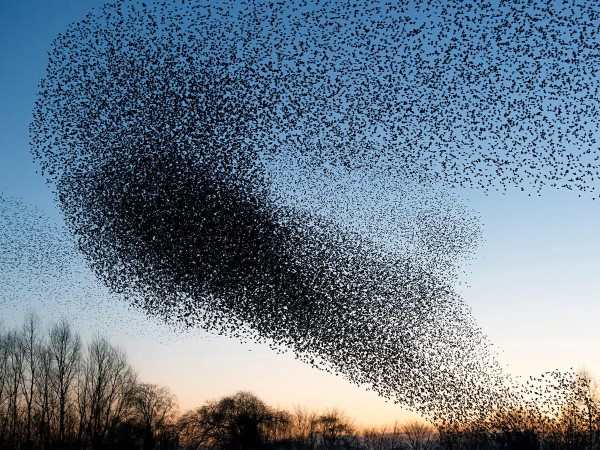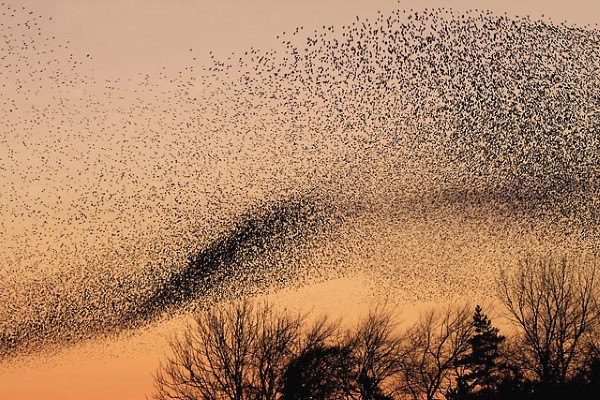
Photo courtesy birdfact.com
Look up, Murfreesboro! The birds are putting on a show. Nature always amazes me. I can always find something magical if I slow down enough to look.
I remember the first time I noticed a murmuration; it took my breath away. One of the cool things about a murmuration event is you can be standing right in the heart of Murfreesboro, or anywhere, look up, and you’ll see one of nature’s wonders.
For those of you who don’t know the term, a murmuration is the ever-changing cloud of thousands of birds in the sky. European starlings swoop and swirl and create different shapes and wave patterns in a synchronized group. When migrating south, the birds rest along the way for weeks at a time and perform murmurations, typically at dusk. During a murmuration event, the birds act as one entity. Each bird focuses and mimics its seven neighbors allowing the group to adapt quickly and move in a uniform and mesmerizing pattern.
Scientists believe that starlings perform this dance as a defense against predators, however, the wave also attracts some predators. Scientists are still scratching their heads about this phenomenon, and the full answer to why exactly the birds dance across our skies. It takes cloud-spotting to a whole new level.

Photo by Walter Baxter
Zooming in on these expert team players, European starlings are non-native birds (the clue is in the name) and many bird lovers and ecologists actually consider them a nuisance. Though there are some pros to the presence of starlings, there is a long list of cons. The most substantial negative is their aggressive and territorial behavior, which has killed off many native songbirds.
Starlings were introduced into the U.S. in 1890, but the original 60 pairs that were released rapidly multiplied. Soon after, the population exploded and spread nationwide, and the rest is history.
Murmurations begin in the fall and last through the winter. I have already seen several events while on the Square in Murfreesboro and strongly encourage everyone to keep their eyes on the skies for the next few months, in the ’Boro and beyond.














This is the most amazing
occurrence in nature! I
was fortunate to see a
Murmuration in Ohio.
I would love to see one
with classical music
playing in the background!
Comment January 22, 2025 @ 4:56 pm